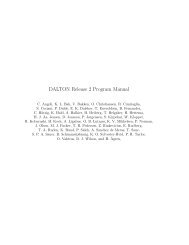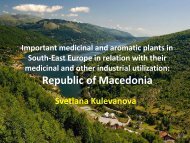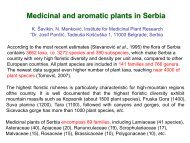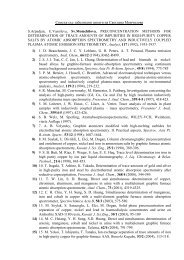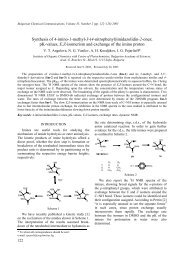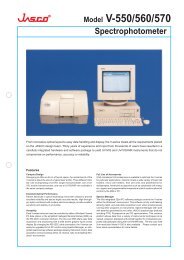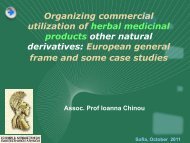Fluorinated Alcohols Enable Olefin Epoxidation by ... - ResearchGate
Fluorinated Alcohols Enable Olefin Epoxidation by ... - ResearchGate
Fluorinated Alcohols Enable Olefin Epoxidation by ... - ResearchGate
You also want an ePaper? Increase the reach of your titles
YUMPU automatically turns print PDFs into web optimized ePapers that Google loves.
Template Catalysis<br />
FIGURE 7. UB3LYP/6-311++G** optimized geometries for the stepwise mechanisms of ethene epoxidation <strong>by</strong> H 2O 2 (top) and<br />
in the presence of CF 3CH 2OH (bottom).<br />
nonfluorinated alcohols, 6 whereas in the presence of the<br />
fluoro alcohols the reactions are stereospecific and exhibit<br />
other characteristics of a polar mechanism. Clearly<br />
therefore, the available experimental data for olefin<br />
epoxidation provide as yet no support for the stepwise<br />
diradical mechanism and favor a concerted polar mechanism.<br />
Guided <strong>by</strong> the experimental results, we consider<br />
henceforth the polar mechanism and attempt to understand<br />
the catalytic effect of the fluoro alcohols.<br />
Discussion<br />
FIGURE 8. Potential energy profile for the diradical mechanism<br />
(UB3LYP) of ethene epoxidation <strong>by</strong> H 2O 2 and in the<br />
presence of CF 3CH 2OH (bottom). Note that these are effectively<br />
concerted mechanisms.<br />
contrast, in the fluoro alcohol assisted reactions the<br />
concerted polar mechanisms are likely to prevail. The<br />
experimental data does not detect any reactivity in<br />
The RB3LYP calculations show that epoxidation of<br />
ethene and propene <strong>by</strong> H 2 O 2 , free or coordinated to an<br />
alcohol molecule, can proceed in a nonsynchronous but<br />
concerted manner. An additional characterization of the<br />
mechanism can be made <strong>by</strong> inspection of the charge<br />
distribution in the transition state. Figures 9 and 10 show<br />
the natural charges, 23 for all of the transition states.<br />
Thus, the amounts of charge transfer from the alkene to<br />
the hydrogen peroxide range from 0.24e to 0.39e for<br />
ethene and from 0.37e to 0.44e for propene, and in both<br />
cases the charge transfer increases markedly in the<br />
presence of the fluoro alcohol. Furthermore, the departing<br />
OH group is negatively charged, and its charge accounts<br />
for most of the charge transfer from the olefin. These<br />
features agree with earlier MP2, B3LYP, and CCSD<br />
results of Bach and co-workers 2,5,27 on olefin epoxidation<br />
J. Org. Chem, Vol. 68, No. 7, 2003 2909



